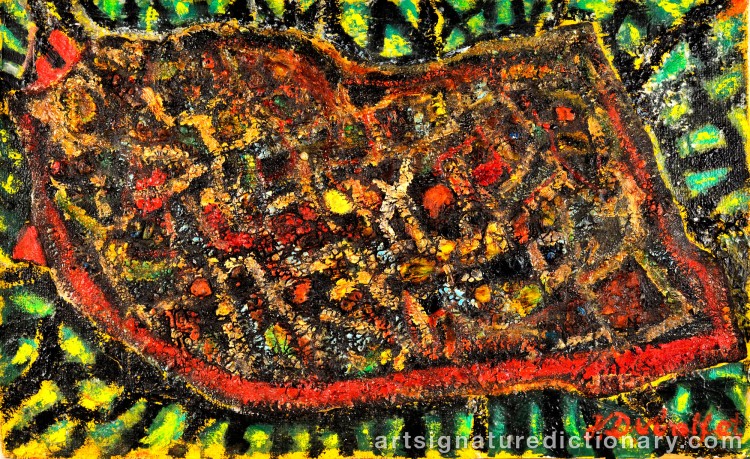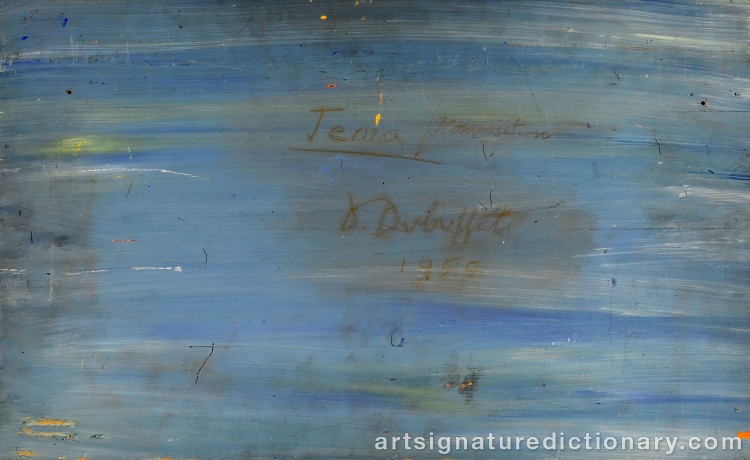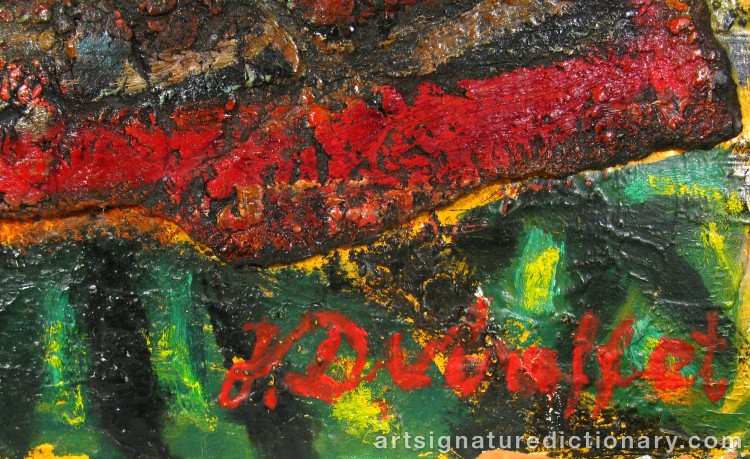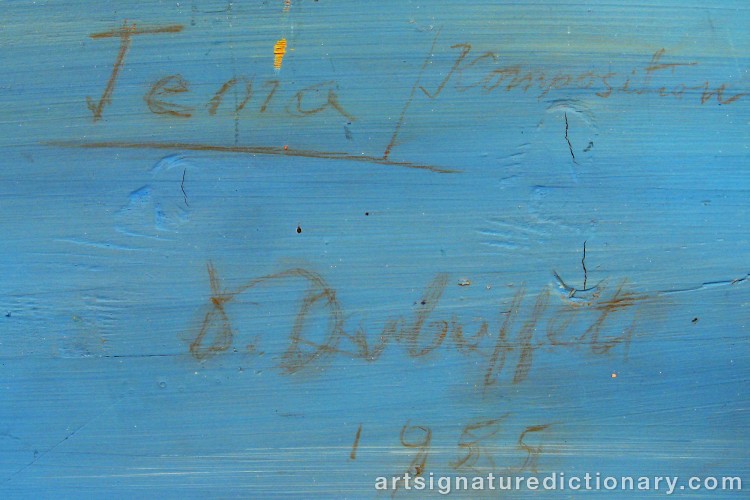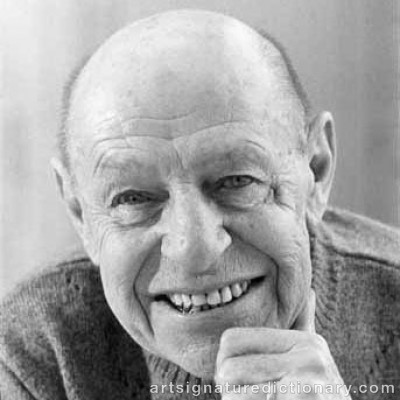
Jean DUBUFFET
1901–1985, France
Also known as: JD
Signatures & monograms
12 signatures and monograms by Jean Dubuffet on drawing, graphic, print, painting and watercolour. Compare authentic and documented counterfeit examples to study signature characteristics.

Signature proven counterfeit
Blandteknik på träpanel, nonfigurativt motiv, signerad "J Dubuffet", storlek 38x63 cm. Målningen var till försäljning hos ett online auktionshus i Sverige i januari 2015. Målningen uppmärksammades av auktionshusets egen personal som kontaktade polisen och uppgav att målningen troligen var en förfalskning eftersom hela målningen, signatur och materialet inte verkade överensstämma med konstnärens sätt att utföra sitt måleri. Målningen tog i beslag för utredning. Domstolens beslut: Undersökning och expertutlåtande visade på att målningen var en förfalskning. Målningen är förverkad.

Signature considered genuine

Signature considered genuine

Signature considered genuine

Signature considered genuine

Signature considered genuine

Signature considered genuine

Signature considered genuine

Signature considered genuine

Signature considered genuine

Signature considered genuine

Signature considered genuine
Explore other artists
Discover other notable artists who were contemporaries of Jean DUBUFFET. These artists worked during the same period, offering valuable insights into artistic movements, signature styles, and authentication practices. Exploring related artists makes it easier to recognize common characteristics and artistic conventions of their era.




